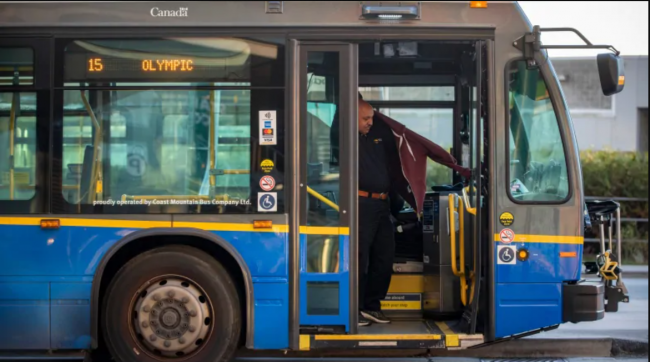Articles Menu

Jan. 26, 2023
Metro Vancouver mayors know their $20 billion wish list for the next decade of new transit investments is a lot — but they say it's worth it.
"We've fallen behind. Our region has grown significantly. We've experienced a lot of population growth, and our transportation and transit systems have not kept pace," said Port Coquitlam Mayor Brad West.
West is the new chair of the TransLink Mayors' Council, the group tasked with overseeing TransLink's strategic direction and priorities. They've begun work on a new 10-year plan, with priorities ranging from more bus service, building a gondola to SFU and extending the Millennium Line all the way to UBC.
The mayors meet for the first time in 2023 on Thursday and will discuss the first steps of the new plan.
Here's what they're asking for this time around and what the big question marks are.
While it's megaprojects that get the most attention, highest on the list of priorities for the Mayors' Council are buses.
The plan includes doubling bus service by 2035 and adding up to 11 RapidBus Lines, including new routes from Marine Drive to 22nd Street station, Lynn Valley to downtown Vancouver and Richmond Centre to Metrotown. In addition, another nine Bus Rapid Transit lines with dedicated lanes are being proposed, some of which would replace current RapidBus routes.
"Expanding bus service touches every part of Metro Vancouver, so there is not a community in this region that will not be positively impacted by the expansion," said West, explaining why it was the top priority in the 10-year plan.
He also said another benefit was that, unlike SkyTrain extensions, new buses typically don't take a decade to become a reality.
"I think that is very attractive to many mayors because we can't wait a decade to see improvements in transit and transportation in this region," he said.
Part of the plan includes the long-discussed new transit crossing connecting the North Shore with the rest of Metro Vancouver — but it would come in stages.
First, a traffic-separated Bus Rapid Transit (BRT) option would be created within the first five years of the plan. At the same time, work would begin on deciding the preferred technology for a final plan, be it light rail or SkyTrain.
In addition, mayors have decided that the preferred route for the North Shore line would be for it to head south to Metrotown after the Second Narrows Bridge rather than west along Hastings Street back to Waterfront.
"It had better opportunities for bidirectional travel. It had a better opportunity for the construction of affordable housing. And the other challenge is we don't want travellers to make unnecessary trips downtown," said North Vancouver District Mayor Mike Little.
"This project out to Metrotown effectively starts to create a bit of a ring road for transit services, making it so people who don't want to go downtown to get to different places in the region can simply shortcut."
An extension of the Millennium Line all the way to the University of British Columbia is also on the wish list but seems to be a lower priority.
The TransLink report to the Mayors' Council says it would only happen "after the North Shore Rapid Transit and BRT Action Plan have already begun implementation."
And while Vancouver Mayor Ken Sim says that extending the line is a priority, he hasn't made it a centrepiece of his leadership in the same way former mayor Kennedy Stewart did and says he'd support other regional transportation projects happening first if that's the will of other leaders.
"Our success doesn't end at Boundary and the bridges," said Sim.
"The TransLink 2050 plan looks at the region holistically, and what's good for the regions is good for Vancouver. And so if we agree that one expansion is better than the other, we'll support it wholeheartedly."
At this point, the one thing all of these projects have in common is they need funding.
TransLink estimates the total cost of the entire 10-year plan at $20 billion and admits that multiple investment plans with higher levels of government will be required.
In addition, the transit organization faces a long-term funding issue due to lower fare revenue from the continued effects of the pandemic and declining revenue from the gas tax, which is currently the main way higher levels of government allow them to raise revenue outside of fares.
"Provincial and federal governments are creating requirements that will significantly increase the number of EVs, so [they're] putting in policies that will de facto ensure that gas tax revenue continues to decline," said West.
"It's only obvious that you're going to have to have something else in its place."
It might seem like a tall task, but virtually all the major transportation projects currently underway in the region — the extension of the Millennium Line to Arbutus, the Expo Line to Langley City and the replacement of the Pattullo Bridge — came out of the previous 10-year plan.
"The way things get done these days is a study turns into a report, a report turns into a plan, and a plan turns into a project," said Little.
"The Mayors' Council has worked very hard to create the priorities in the 10-year vision. We need to stick to them and develop and get them implemented."
[Top photo: TransLink is prioritizing an expanded bus service network in its 10-year investment plan, but the cost of the overall plan is currently projected at approximately $20 billion. (Ben Nelms/CBC)]